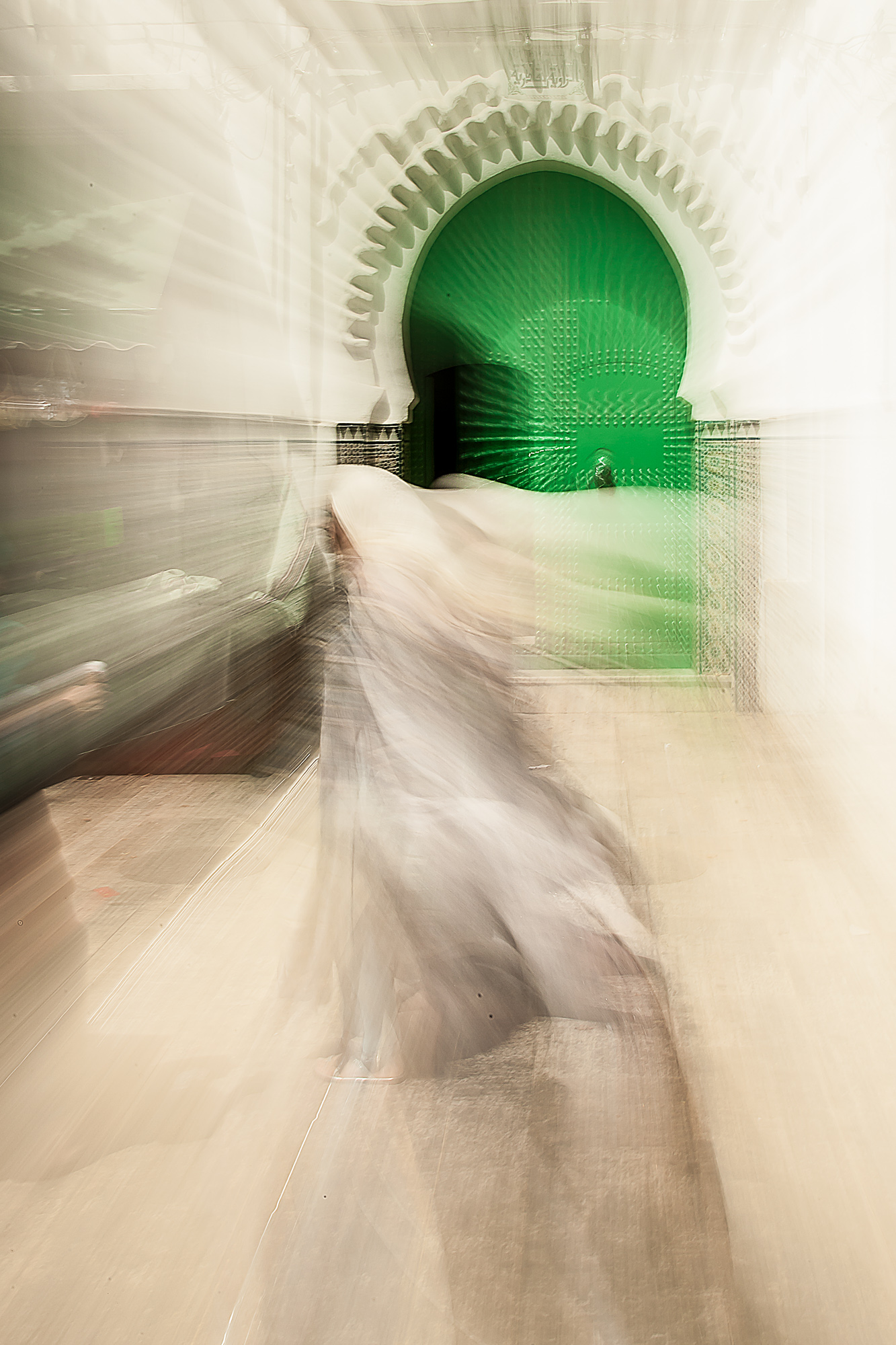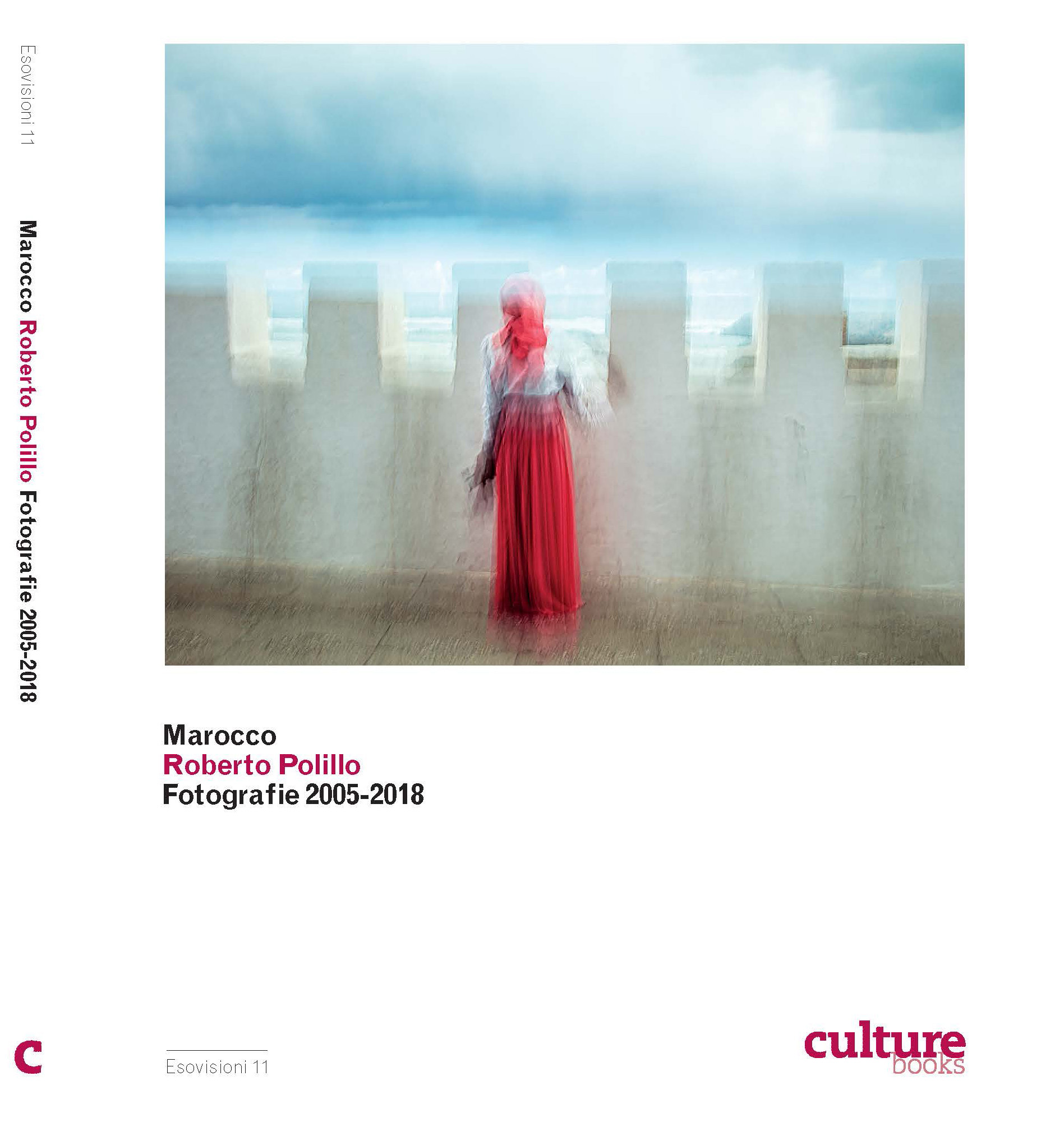Museo delle Culture uses cookies to improve the user experience. If you need more information click on the privacy page. Privacy policy X
07 March 2020 - 27 September 2020, VILLA MALPENSATA, SPAZIO MARAINI (GROUND FLOOR)
The exhibition is part of the "Esovisioni" cycle and it is set up in the Spazio Maraini, on the ground floor of Villa Malpensata. It is the first event of a cultural season that MUSEC dedicates to Morocco, to the arts, to the people, to the charm that the landscape and the history of this country have given to western culture.
Roberto Polillo is a photographer and a traveller, always in search of the "spirit of places". His images of Morocco, strongly impressionist, bring back to life atmospheres full of magic and colour, where century-old architecture and elusive figures between tradition and change stand out.
The exhibition is the result of a visual research project that MUSEC launched in 2015; it is based on considerations that the photographer's gaze is capable of going beyond Orientalist stereotypes, to more intimately grasp the values of an exoticism that constitutes the generic and universal tendency of the soul that leads men to desire what is foreign and unknown.
Roberto Polillo was born in Milan in 1946. His father Arrigo was a critic, historian, jazz promoter and director of the magazine Musica Jazz. Precisely as a result of his father's activity, from a very young age Roberto began to know and use photography. From 1962 to 1974 he took pictures of over a hundred concerts in Italy performed by some of the major jazz artists of the time.
These shots have been published many times in magazines, books and CDs, as well as on the Internet. His photographic book Swing, Bop & Free (2006) presents a selection of images from over 100 musicians active during the Sixties, all pictures are accompanied with texts and quotations from his father Arrigo and other authors.
However, starting in the 1970s, it was the innovative world of computer science that traced the professional life of Roberto Polillo, who became an entrepreneur, consultant and manager in the software and IT services sector, as well as co-founder and CEO of Etnoteam, a group of IT and Internet service companies, including INET.
At the same time, Polillo was also a university lecturer for 41 years (from 1974 to 2015), first in software engineering and then on the Internet, holding various courses at the Università Statale di Milano and the Università degli Studi di Milano Bicocca.
During the years spent collaborating with Etnoteam group, Polillo continued to practice photography only occasionally and for enjoyment. He resumed practicing it more widely in 2003, after ending his managerial activities.
Continuing in some way the photographic experience linked to the world of entertainment, he initially dedicated himself to photographing street artist festivals and then devoted himself extensively to travel photography. Travelling, in fact, is another of Roberto Polillo's great interests, to date he has visited over 60 countries. These trips have become more frequent with the rise of digital photography in the early 2000s.
During his second trip to Morocco, Polillo accidentally experimented with what would later become known as the ICM (Intentional Camera Movement) technique: through a lucky "error" in the setting of the camera, the image is characterized by a blurred effect. The pictures are taken with long exposure times by moving the camera during the shot, creating fascinating and painting like images, very different from traditional travel photographs and also from the analogical black and white photographs Polillo had taken of jazz musicians. This inspired a new project called Impressions of the World, an artistic adventure that took the artist to over 25 countries, from Venice to the Middle and Far East, North America and Central America. In another project known as Future & The City, Roberto Polillo explores visual hypotheses about the cities of the future.
After the death of his wife Patricia, in 2014, photography became Polillo's main activity, as shown by the strong increase in exhibition activity and the publication of various photographic books. Within the Impressions of the World projects he has so far published the books Visions of Venice (2016) and Future & The City (2017). The images have been exhibited in various solo exhibitions in Venice, Milan, Trieste and Paris and presented at important art fairs in Italy and the United States. In 2016 he was awarded the Lifetime Achievement Award by the EBA - European Business Association as part of the European Business Award Competition.
Today, Roberto Polillo lives between Milan, Rome and Miami. He splits his time between managing the P&R Foundation, he founded in 2016, and his intense commitment to travel photography.
.jpg)
Roberto Polillo photographed by Stefano Molaschi, 2018
All the works on display and in the catalogue derive from photographs taken by Roberto Polillo during seven trips to Morocco, between 2005 and 2018. The original photographs were taken with professional digital cameras by CANON. The rendering of the "blurred" effect follows an artistic process that aims to restore the idea of an altered spatial perception. The camera is moved by slight movements that engrave the image with fluid lines while maintaining a high sharpness. In the first shots this formal result was also achieved by using the zoom functions of the camera. The exposure varies depending on the case, typically from 0,3 to 1 second. This is made possible, with daylight, by the use of neutral filters that lower the brightness of the image without altering its colours.
The format currently chosen by the artist is horizontal, while the vertical format reflects a distinctive process of the photographer's early years.
The works have been subject to a limited digital editing with the use of Photoshop. The interventions do not normally alter the original shots and are mainly used in selected details of the picture to increase the saturation of the colours and the sharpness of the lines.
Under the supervision of the artist himself, all works are produced in a limited edition of 10 copies, numbered and signed by the author, on Hahnemühle FineArt Pearl 285 gsm paper. They are printed in three formats: large 60×90 cm, medium 30×90 cm and small 30×45 cm. In particular, the small format was chosen for some images that capture details of larger images and for the section "The Soul Backstage", in order to underline its intimist content. These are, in almost all cases, prints presented to the public for the first time.

The exhibition lay out, reflected in the sequence of the works in the catalogue, intends to suggest different levels of reading that correspond to the development of Polillo's visual research as we can deduce it from the entire corpus from which the works on display have been taken and as derived from the anthropological analysis of the works. The way in which the works are presented refers to the theme of approaching culture and the subjective experience of vision.
Introduction - This section introduces the public to Polillo's work, intended as an expression of an approach to culture but also as a revelation of one's own intimacy.
Multiplicity in the Space - The space represented by Polillo's work is well-defined: the battlements, the arcades, the ancient walls recall an exotic and timeless vision of Morocco. Representing silent millenary architecture or crowded places, the artist tries to represent the dual existence of the individual's consciousness: solitary yet multiple.
The movement: from everyday life to history - Within his works the space described by the artist expresses a modulation of dynamism. The movement of everyday life is outlined by fluid and fleeting figures that mark the symbolic background of history with their passage.
The backstage of the soul - Like a watercolour, Polillo's photography describes the walls of the buildings, the walls of the alleys, the arches as scenic scenes where the actions of everyday life take place and where the conscious and unconscious ghosts of the artist himself move.
Perception and reality - The vertical format used in selected works is the artist's favourite tool to signal a more marked spatial and emotional approach. Compared to the photographer's eye, the subjects of the shots remain, despite the approach, marked by a certain distance that marks in this way the perception of an "otherness" from which the fascination of Morocco continues to flow.
The exhibition at MUSEC is accompanied by a catalogue from the Esovisioni series (n. 11) which collects 94 images by Roberto Polillo, including those exhibited in the Spazio Maraini.
Morocco. Roberto Polillo. Photographs 2005-2018, edited by Imogen Heitmann & Moira Luraschi, Esovisioni/11, Culture Arts&Books, Morbio Inferiore 2020, pp. 208 - ISBN 978-88-36-64629-6 – CHF 38 / € 36.
From the back cover
"To fully interpret the portrait that Roberto Polillo gives of Morocco, it is first of all necessary to follow the generic and universal tendency of the soul that leads man to desire what is foreign and unknown, imagining the existence of distant places where greater wisdom reigns, where life is more intense and voluptuous, and where a prodigal nature or better knowledge alleviates the pain of existence. The space-time becoming of its colours that transcend nature, echoing orientalist seductions, if it denotes a certain cultural otherness in our eyes, it determines more deeply in our experience a wide phenomenological space where some decidedly mythopoeic elements take shape: the play of signs, the shape of atmospheric space, the daily life that becomes history, architecture as the backdrop of the soul and the moment of a reality just touched and already disappeared. Elements that, as a whole, exalted by the resources of an impressionist photographic language, give us back not only the reasons for an artistic research, but also the highest figure of the maturity of a style".

Exhibition dates: 7 March - 27 September 2020
Open: every day, except Tuesday, 11am - 18 pm